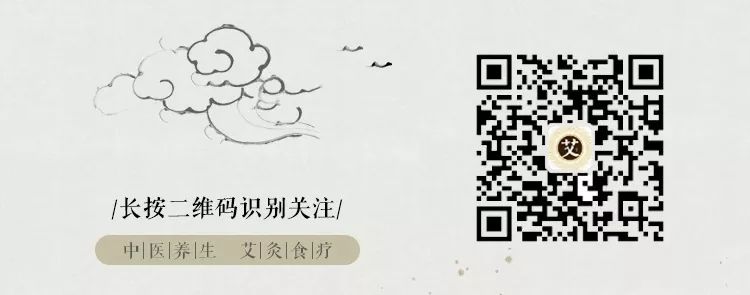Cold is the Root of All Diseases
Many diseases we encounter in life are caused by cold. In other words, cold is the root of many illnesses.
The sources of cold can be numerous, generally categorized into external cold and internal cold: external cold arises from exposure to wind and cold, commonly referred to as wind-cold flu; internal cold is caused by insufficient yang energy in the body. The sun provides light and warmth to nature; without sunlight, all living things cannot survive. The yang energy within the body is like the sun in the sky; when yang energy is insufficient, it cannot warm the body, leading to symptoms such as fear of cold, fatigue, lack of energy, loose stools, and frequent clear urination.

External and internal cold require different methods of removal. External cold needs to be dispersed; a slight sweat can drive away the cold from the body (ancient TCM texts state that cold first accumulates in the subcutaneous meridians, referred to as “cǎo lǐ” in the texts, and over time can transfer to the corresponding “fǔ” organs, such as lung cold and kidney cold). Internal cold, on the other hand, requires warmth, and warming herbs such as dried ginger (gān jiāng), Bai Zhu (White Atractylodes), and ginseng (rén shēn) can be used to prepare decoctions for consumption.
Gui Fu Li Zhong Wan: A Representative Formula of the Yang-Enhancing School
Renowned TCM scholar Wu Peiheng highly praised the role of enhancing yang in treating diseases. He had unique applications of warming herbs like Bai Fu Pian (White Atractylodes) and cinnamon (ròu guì), earning him the nickname “Wu Fuzi.” Many famous physicians throughout history have also emphasized the importance of yang energy in the human body. The ancient TCM classic, the Huangdi Neijing (Yellow Emperor’s Inner Canon), states: “Yang energy is like the sun and the moon; if lost, life shortens and becomes obscure.” The Neijing highly summarizes the nurturing function of yang energy as “like the sun and the moon,” meaning: “Only with abundant yang energy can one be spirited, energetic, agile, and strong.”

The Li Zhong Tang (Regulating the Middle Decoction) from the Shang Han Lun (Treatise on Cold Damage) is a representative formula for warming and tonifying spleen yang, treating deficiency-cold in the middle burner. Li Zhong Tang consists of ginseng (rén shēn), dried ginger (gān jiāng), Bai Zhu (White Atractylodes), and roasted licorice (zhì gān cǎo), with equal proportions of each ingredient, as stated in the Shang Han Lun, each using three taels. TCM practitioner Li Ke stated: Li Zhong Tang can treat a hundred diseases. Later generations added cinnamon and aconite, calling it Gui Fu Li Zhong Tang.
Gui Fu Li Zhong Tang, originating from the Qing Dynasty’s Hóukē Zhòng Fú, is a famous formula for warming and tonifying the yang of the spleen and kidneys, dispelling cold and alleviating pain. For individuals with spleen and stomach deficiency-cold and cold hands and feet, Gui Fu Li Zhong Tang is an excellent remedy.

【Symptoms】 Cold limbs, pale complexion, soreness and weakness in the lower back and knees, cold pain in the abdomen; chronic diarrhea, persistent dysentery, early morning diarrhea, clear stools; difficulty urinating, limb swelling, and in severe cases, abdominal distension; may also experience frequent urination, residual dribbling, or frequent nighttime urination; tongue is pale and swollen or has tooth marks on the edges, with a white and slippery coating.
【Functions and Indications】 Tonifies kidney yang, warms the middle, and strengthens the spleen. Used for kidney yang deficiency, spleen and stomach deficiency-cold, abdominal cold pain, vomiting, diarrhea, and cold limbs.
【Characteristics】 Small brown honey pills; mild aroma, sweet and spicy taste.
As the saying goes, “For every degree of yang deficiency, the disease progresses by one degree; for every degree of yang recovery, the evil recedes by one degree.” In this formula, cinnamon (ròu guì) and aconite (fù zǐ) serve as the monarch herbs, being very spicy and hot, tonifying kidney yang and expelling cold evil; Dang Shen (党参) is sweet and warm, tonifying qi and strengthening the spleen. Roasted ginger (pào jiāng) is spicy and hot, warming the middle, dispelling cold, alleviating pain, and stopping diarrhea, serving as the minister herbs. The combination of monarch and minister herbs, sweet, warm, and spicy, tonifies yang energy and warms the middle while strengthening the spleen. The spleen is the source of dampness; when deficient, it easily produces damp turbidity, hence the use of Bai Zhu (White Atractylodes), which is sweet, warm, and bitter, to assist in strengthening the spleen and drying dampness. Licorice (gān cǎo) is used in equal amounts with the other herbs, symbolizing three meanings: first, to assist ginseng and Bai Zhu in tonifying qi and strengthening the spleen; second, to alleviate pain; third, to harmonize the properties of the herbs, serving as an auxiliary herb while also enhancing the efficacy of the formula. Overall, the formula combines warming and tonifying, with warmth as the primary focus, effectively dispelling cold and restoring yang energy, replenishing the middle qi, and achieving the functions of tonifying kidney yang, warming the middle, and strengthening the spleen.
Our ancestors left us with the Huangdi Neijing, which states: “To know the essentials, one word suffices; to not know the essentials leads to endless wandering.” The elegant words of ancient TCM classics may not be very accessible, but the saying “strike the snake at its seven inches” is very direct and vivid. Regarding how to maintain health, as long as one understands that “yang energy is the root of life vitality,” one has found the key point and core. It is clear that any method that can maintain and consolidate this “root of life vitality” is a good health-preserving method; otherwise, it may harm health, and one will not easily be dazzled and confused.


